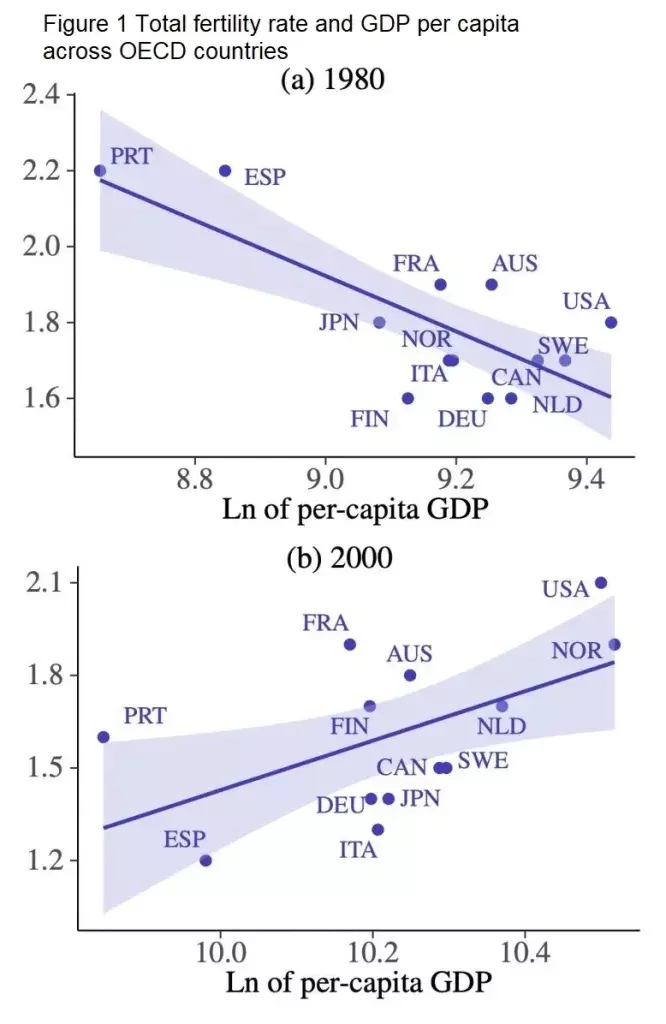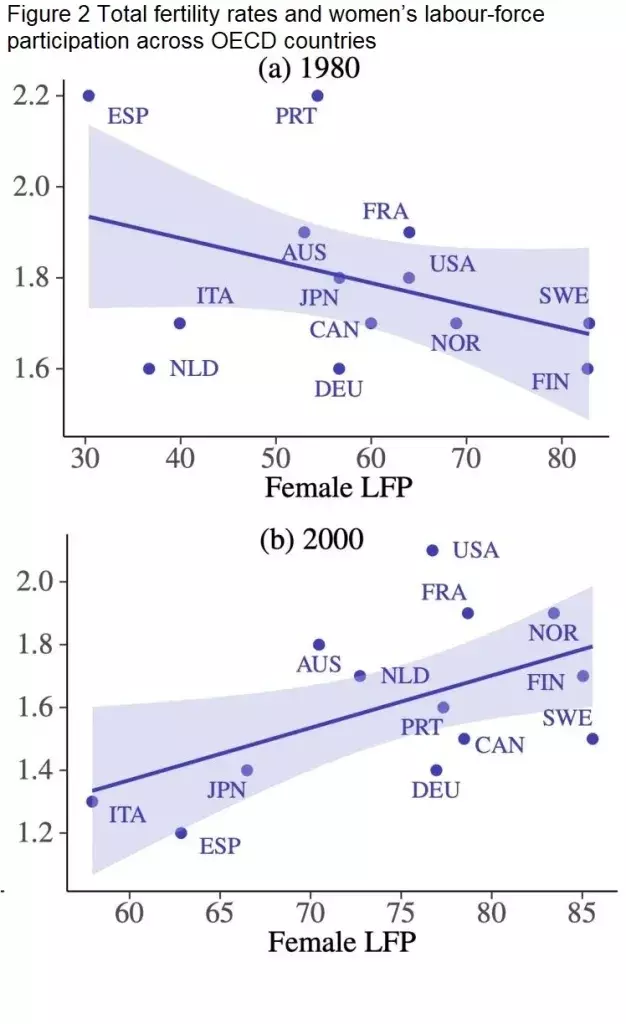Comments
- No comments found

For some decades now, the world has been following the patterns of a demographic transition with life expectancies rising and birth rates falling, as we head for a world where the elderly are a much larger share of the global population.
However, Matthias Doepke, Anne Hannusch, Fabian Kindermann, and Michèle Tertilt argue that it’s time for “The New Economics of Fertility” (IZA Discussion Paper #15224, April 2022). For a short readable overview of the main themes, you can check their shorter discussion at the VoxEU website (June 11, 2022).
From the abstract of the academic paper, the authors write:
In this survey, we argue that the economic analysis of fertility has entered a new era. First-generation models of fertility choice were designed to account for two empirical regularities that, in the past, held both across countries and across families in a given country: a negative relationship between income and fertility, and another negative relationship between women’s labor force participation and fertility. The economics of fertility has entered a new era because these stylized facts no longer universally hold. In high-income countries, the income-fertility relationship has flattened and in some cases reversed, and the cross-country relationship between women’s labor force participation and fertility is now positive.
A couple of pictures may help, here. It used to be that countries with higher incomes had lower fertility rates, but among high-income countries, this pattern no longer holds. Here’s a figure taken from the VoxEU overview. The top panel shows that within the group of high-income countries in 1980, countries with higher per capita GDP had lower fertility, but by 2000, countries in this group with higher per capita income had higher fertility.

What about the relationship between women’s fertility and the labor force participation rate of women? Here’s the parallel figure. It shows that in 1980, within the group of high-income countries, those with higher fertility tended to have lower labor market participation for women; by 2000, the countries with higher fertility tended to have higher labor force participation for women.

The previous theories of fertility were based on some intuitively plausible claims. As incomes went up in a given country, the opportunity costs of having a child went up, so women would be more likely to enter the labor force and fertility would decline. But now it appears that as incomes rise in a given country, women are likely to have more children and also to spend more time in the labor force. Instead of higher incomes being less compatible with children and with being in the workforce, they are apparently becoming more compatible. The authors write:
We highlight a number of factors that have blunted the forces emphasized by the first generation of economic models of fertility. For example, in high-income countries, child labor has disappeared and education for most children continues past childhood into the adult years. These changes imply that the tradeoff inherent in quantity-quality models between sending children to school versus having more resources to raise a larger family has lost salience. Similarly, models based on women’s opportunity cost of time posit that raising more children requires mothers to spend less time working in the market. While this tradeoff still exists today, it has weakened as alternative forms of childcare have become more prominent. When childcare is provided by someone other than the mother—whether a hired nanny, a government-run kindergarten, or the child’s father—the cost of children is no longer linked directly to the mother’s opportunity cost of time.
To explain why the empirical relationship between women’s labor force participation and fertility has not just flattened, but entirely reverted, research has taken directions that go beyond the first-generation models. A general theme in this new literature is that the compatibility of family and career has become a key determinant of fertility in high-income economies. Where the two are easy to combine, many women have both a career and multiple children, resulting in high fertility and high female labor force participation. When career and family goals are in conflict, fewer women work and fewer babies are born. We point out four factors that help mothers combine a career with a larger family: the availability of public child care and other supportive family policies; greater contributions from fathers in providing childcare; social norms in favor of working mothers; and flexible labor markets.
It is far too early to discern whether these kinds of shifts will alter the global pattern of lower birth rates. But it does suggest that those who would prefer rising birth rates should focus on policies and norms that make it easier for women to work; conversely, those who prefer lower birth rates might prefer policies and norms that increase the tradeoffs for women entering the workplace.
Timothy Taylor is an American economist. He is managing editor of the Journal of Economic Perspectives, a quarterly academic journal produced at Macalester College and published by the American Economic Association. Taylor received his Bachelor of Arts degree from Haverford College and a master's degree in economics from Stanford University. At Stanford, he was winner of the award for excellent teaching in a large class (more than 30 students) given by the Associated Students of Stanford University. At Minnesota, he was named a Distinguished Lecturer by the Department of Economics and voted Teacher of the Year by the master's degree students at the Hubert H. Humphrey Institute of Public Affairs. Taylor has been a guest speaker for groups of teachers of high school economics, visiting diplomats from eastern Europe, talk-radio shows, and community groups. From 1989 to 1997, Professor Taylor wrote an economics opinion column for the San Jose Mercury-News. He has published multiple lectures on economics through The Teaching Company. With Rudolph Penner and Isabel Sawhill, he is co-author of Updating America's Social Contract (2000), whose first chapter provided an early radical centrist perspective, "An Agenda for the Radical Middle". Taylor is also the author of The Instant Economist: Everything You Need to Know About How the Economy Works, published by the Penguin Group in 2012. The fourth edition of Taylor's Principles of Economics textbook was published by Textbook Media in 2017.
Leave your comments
Post comment as a guest